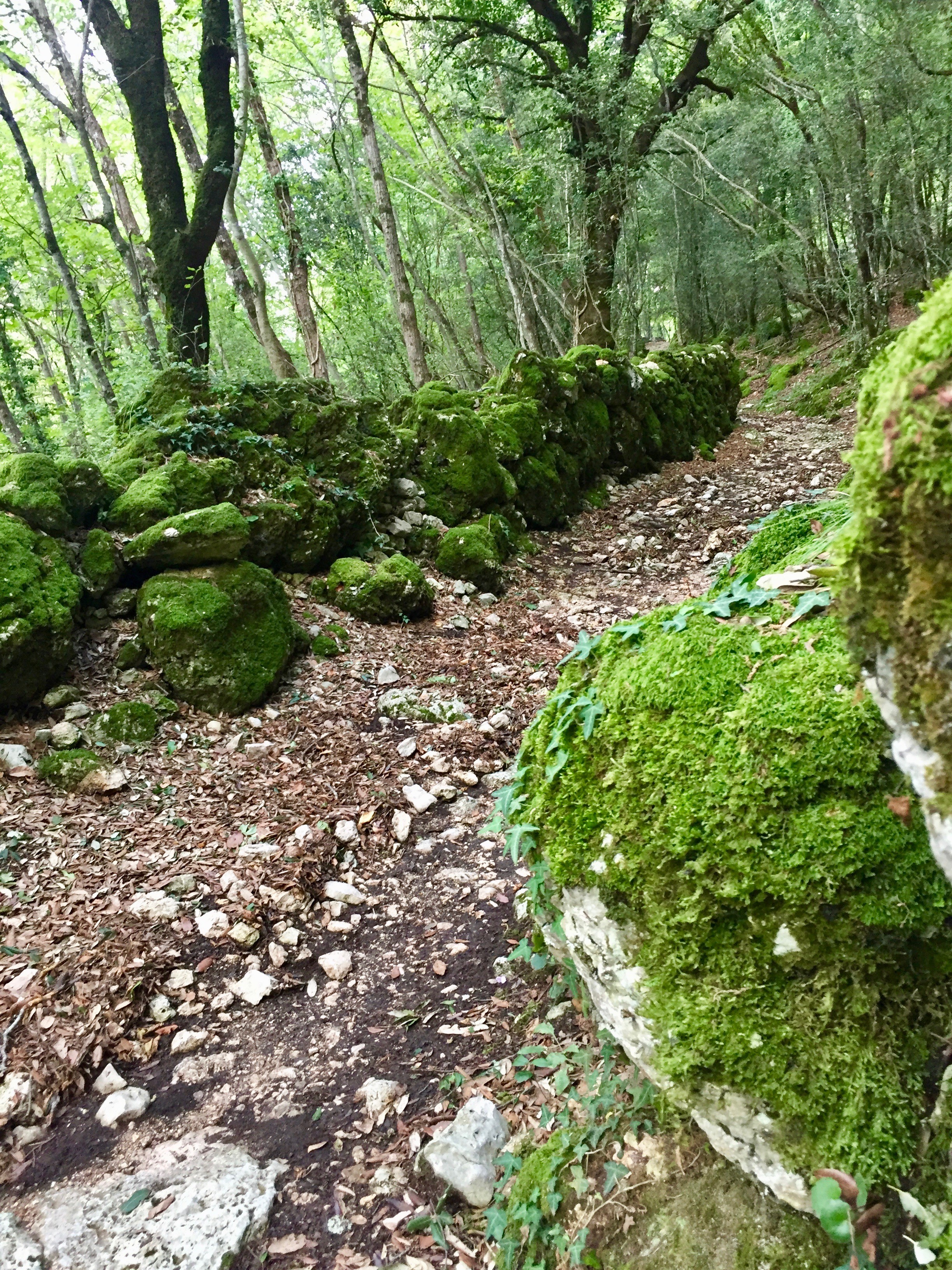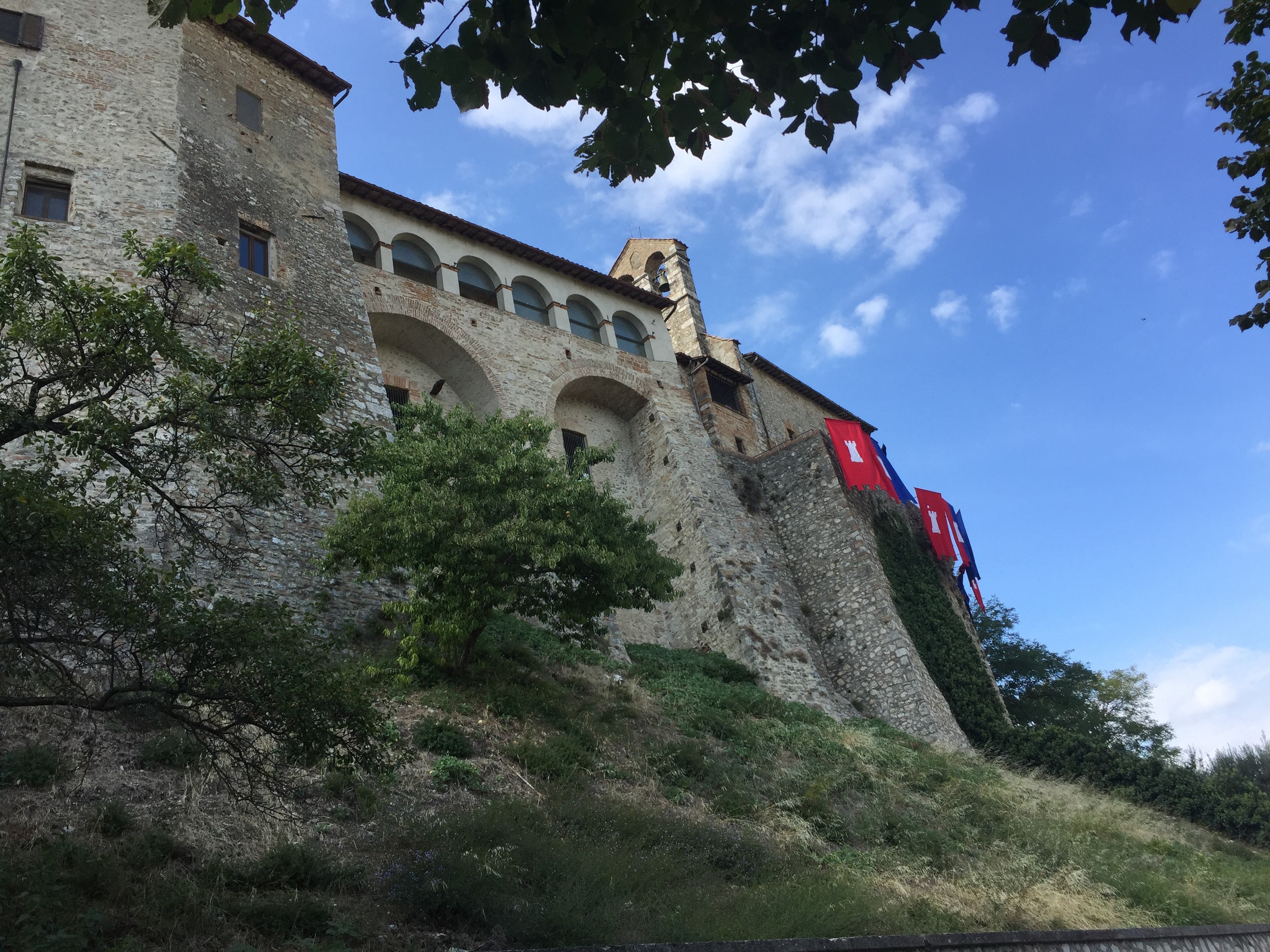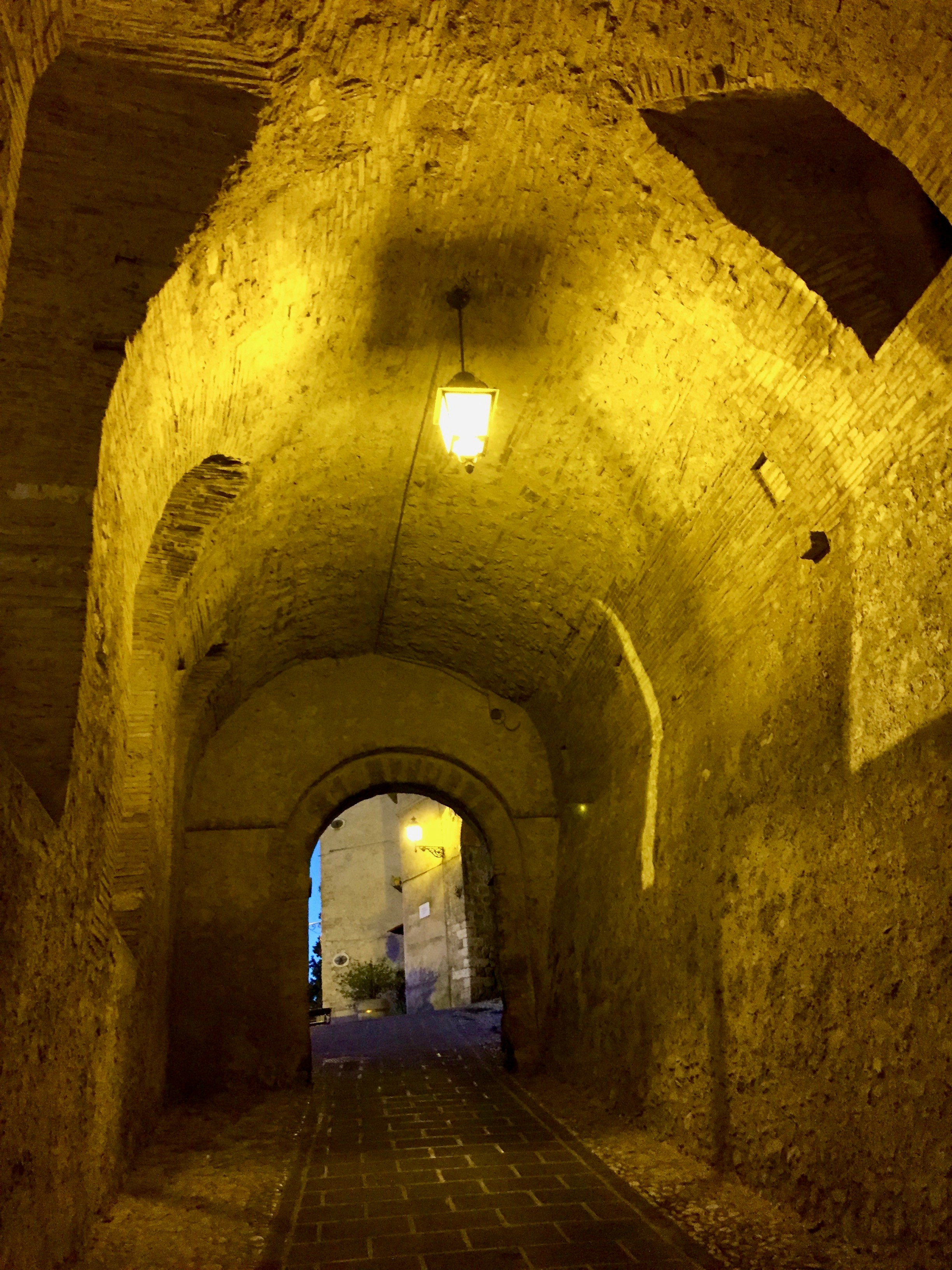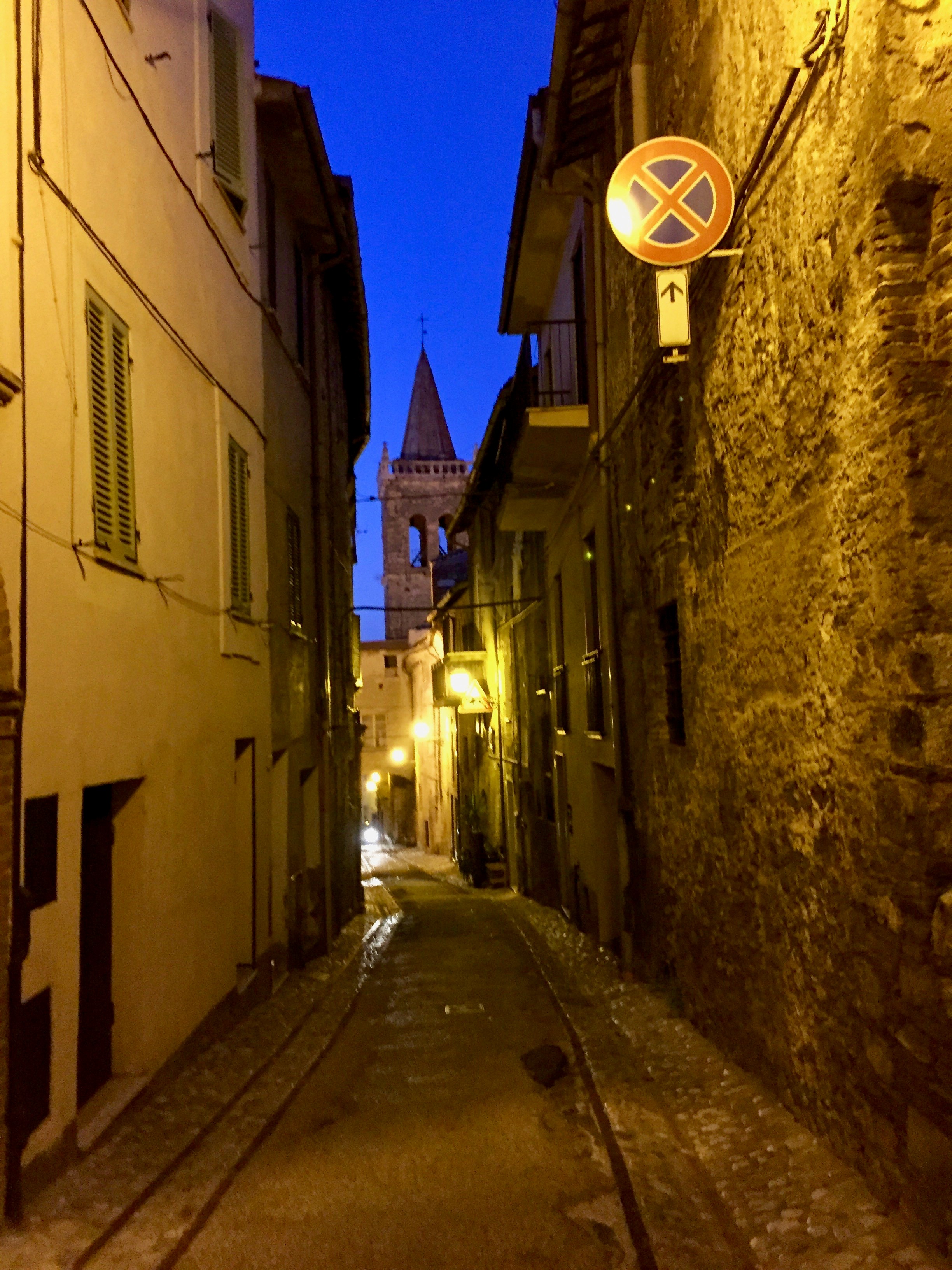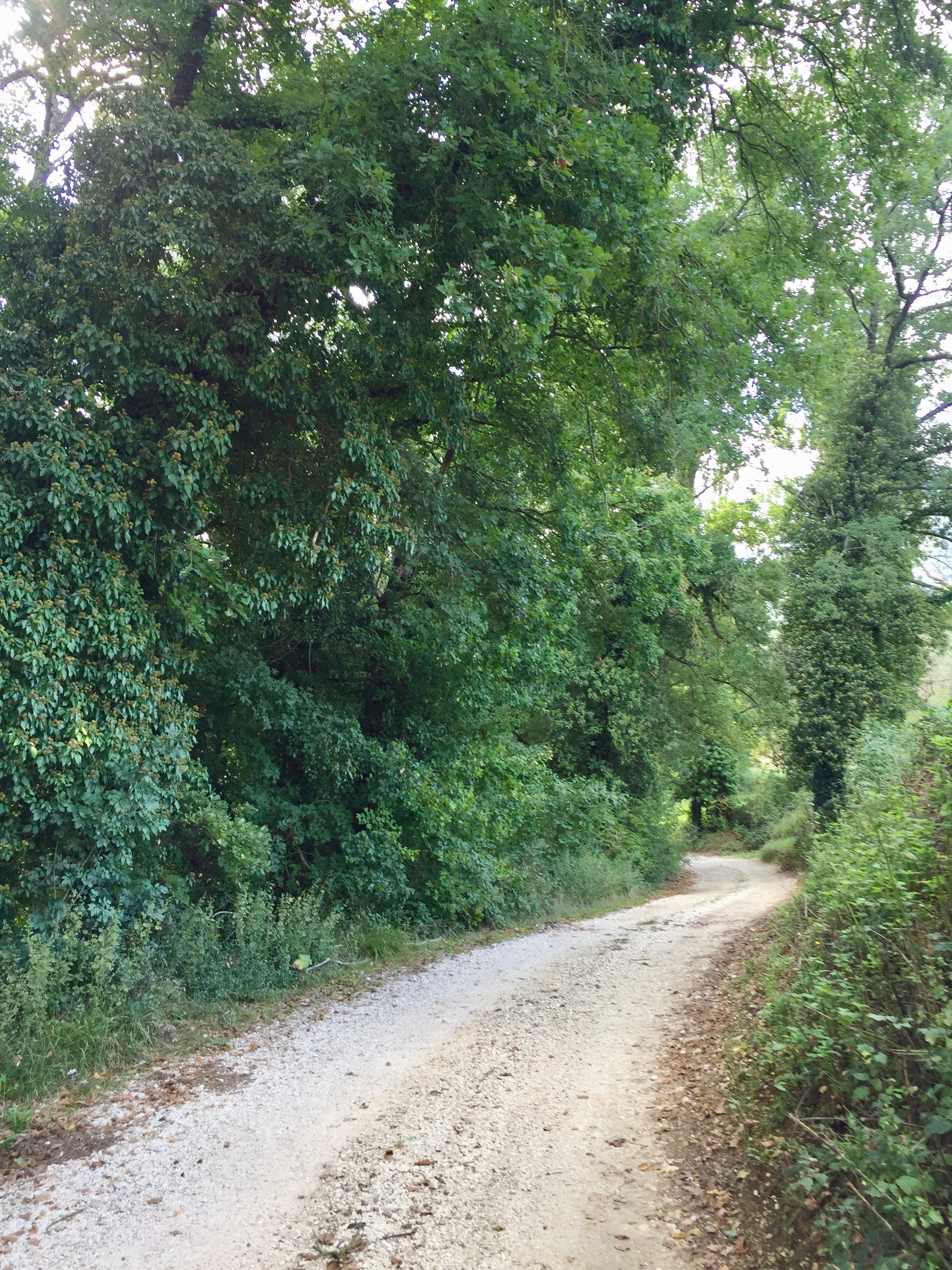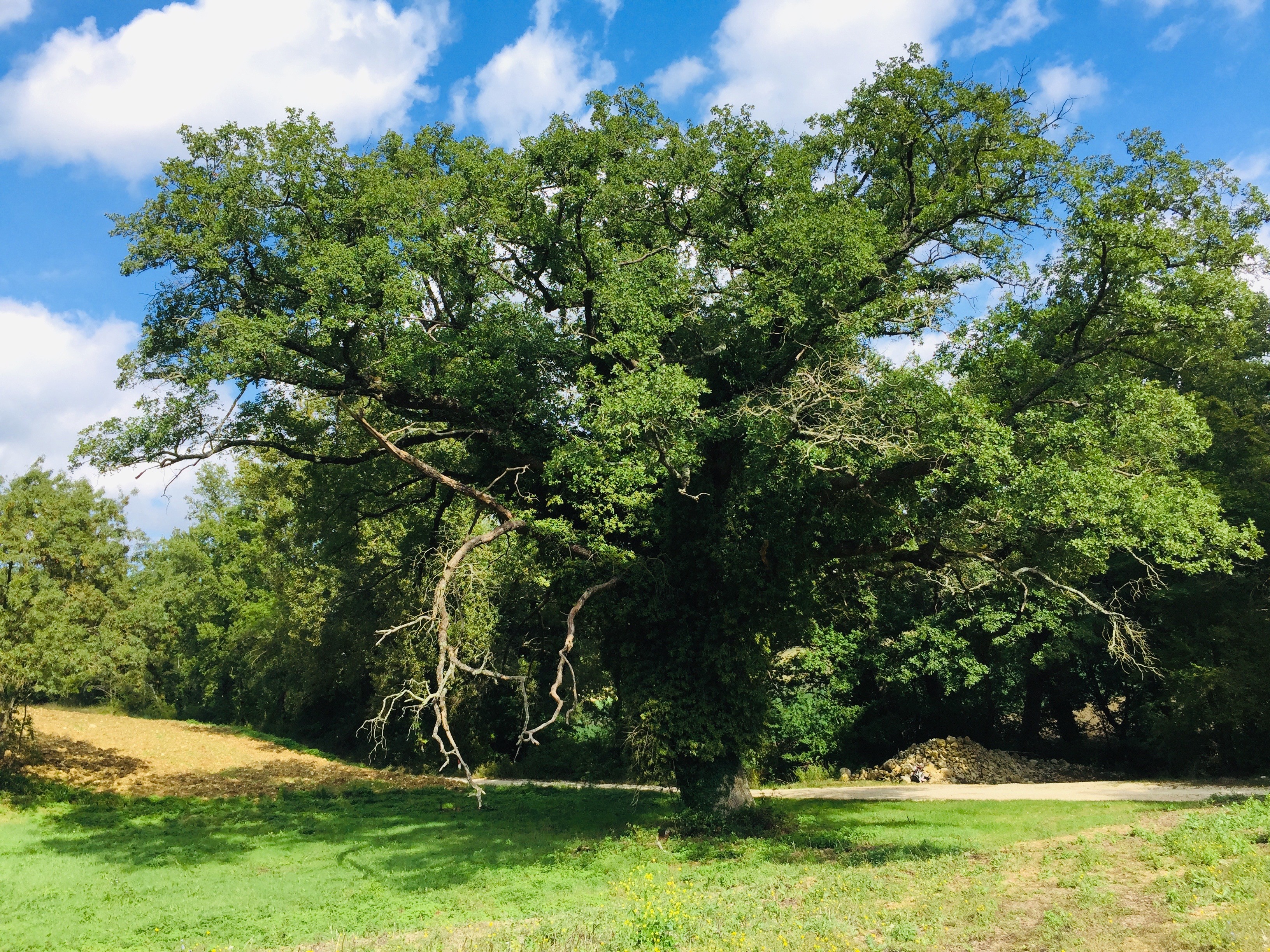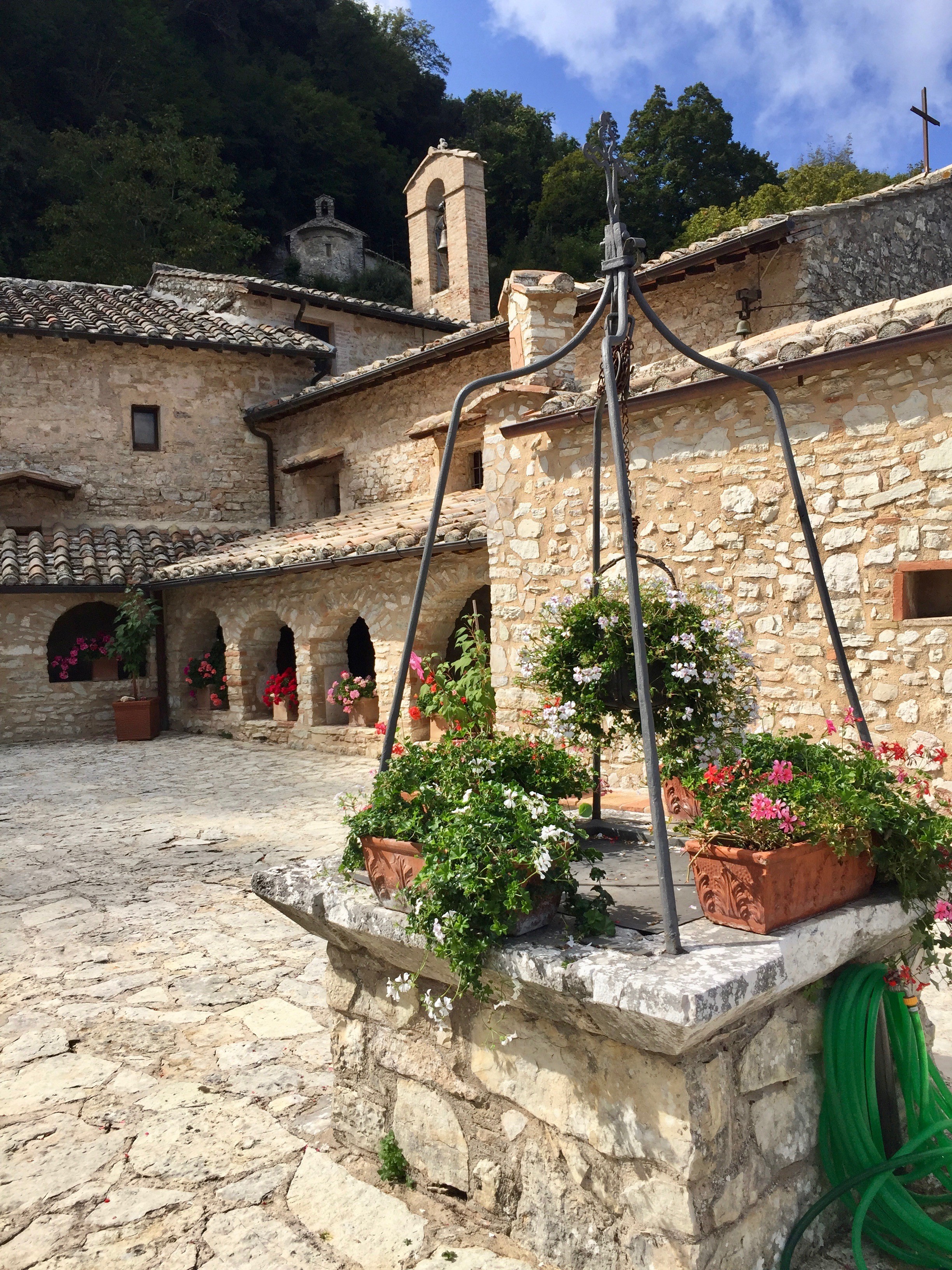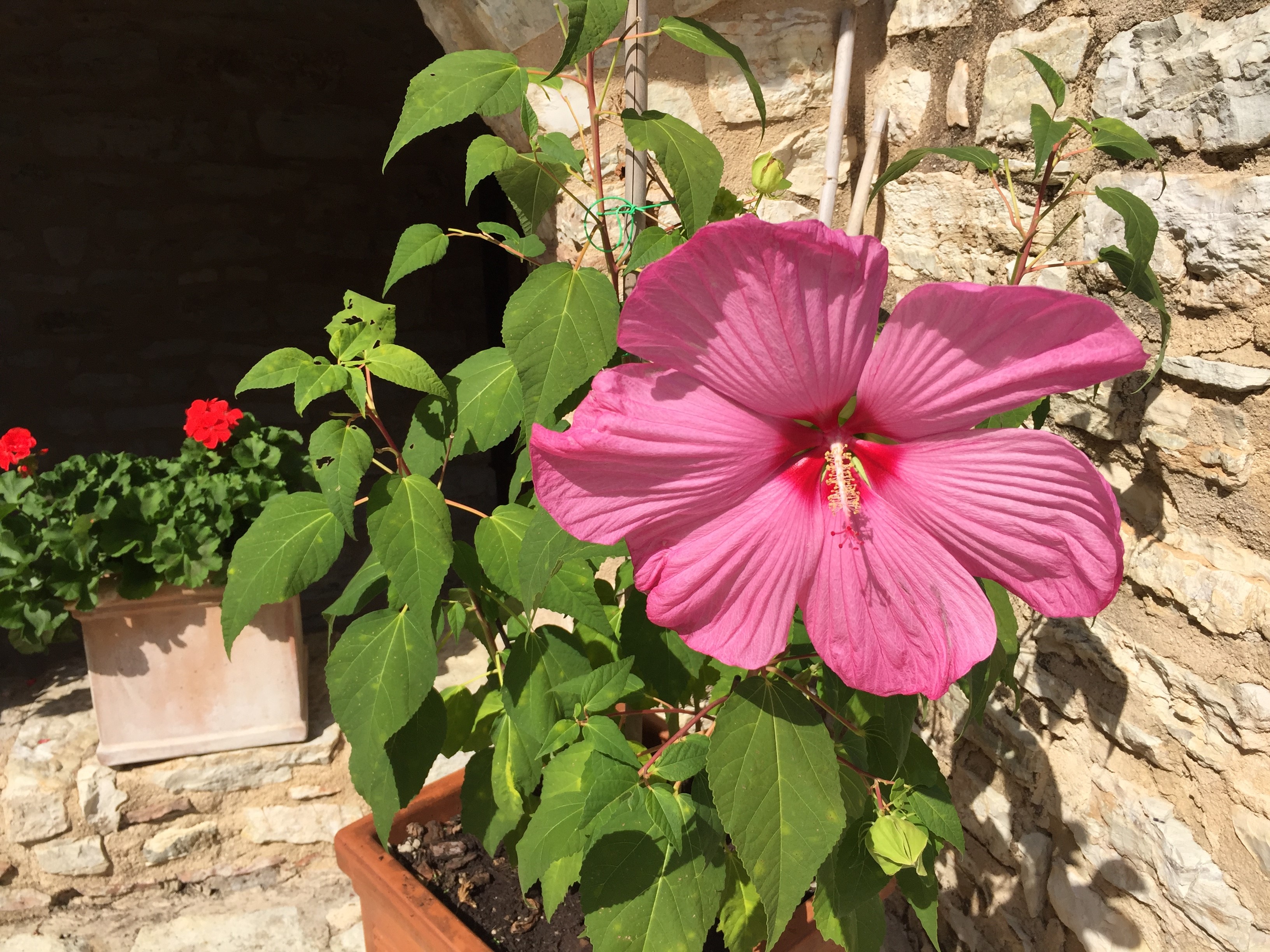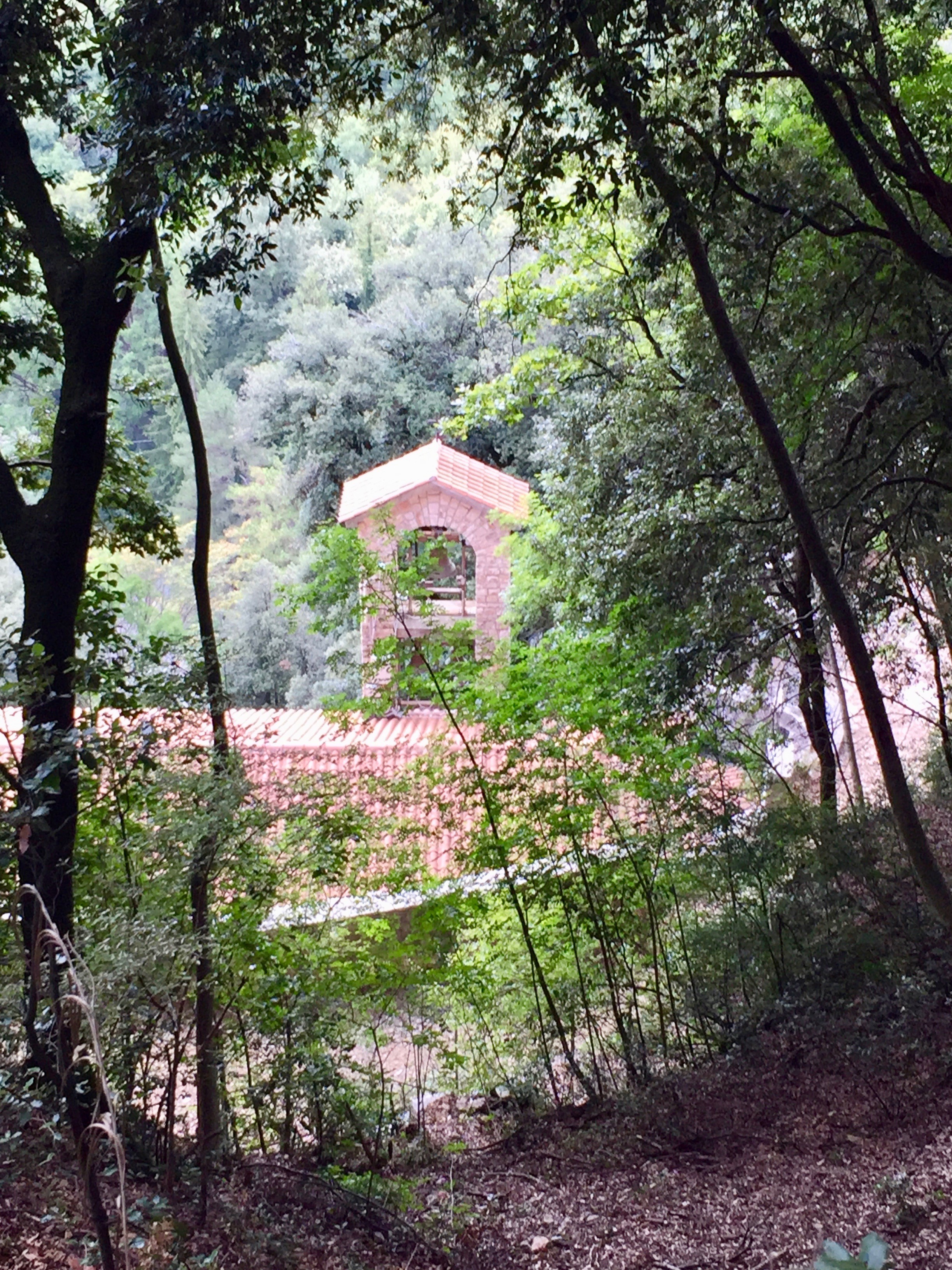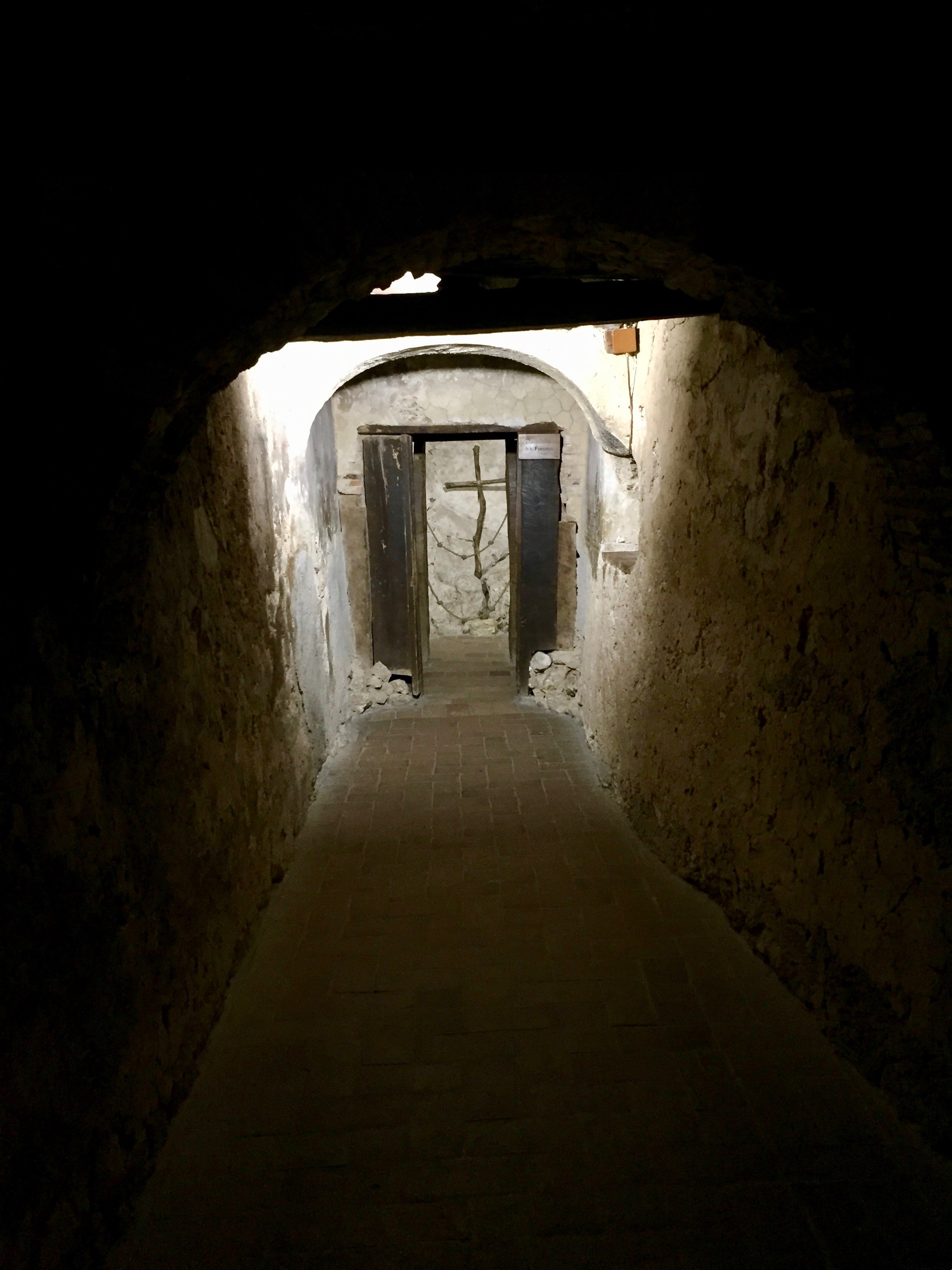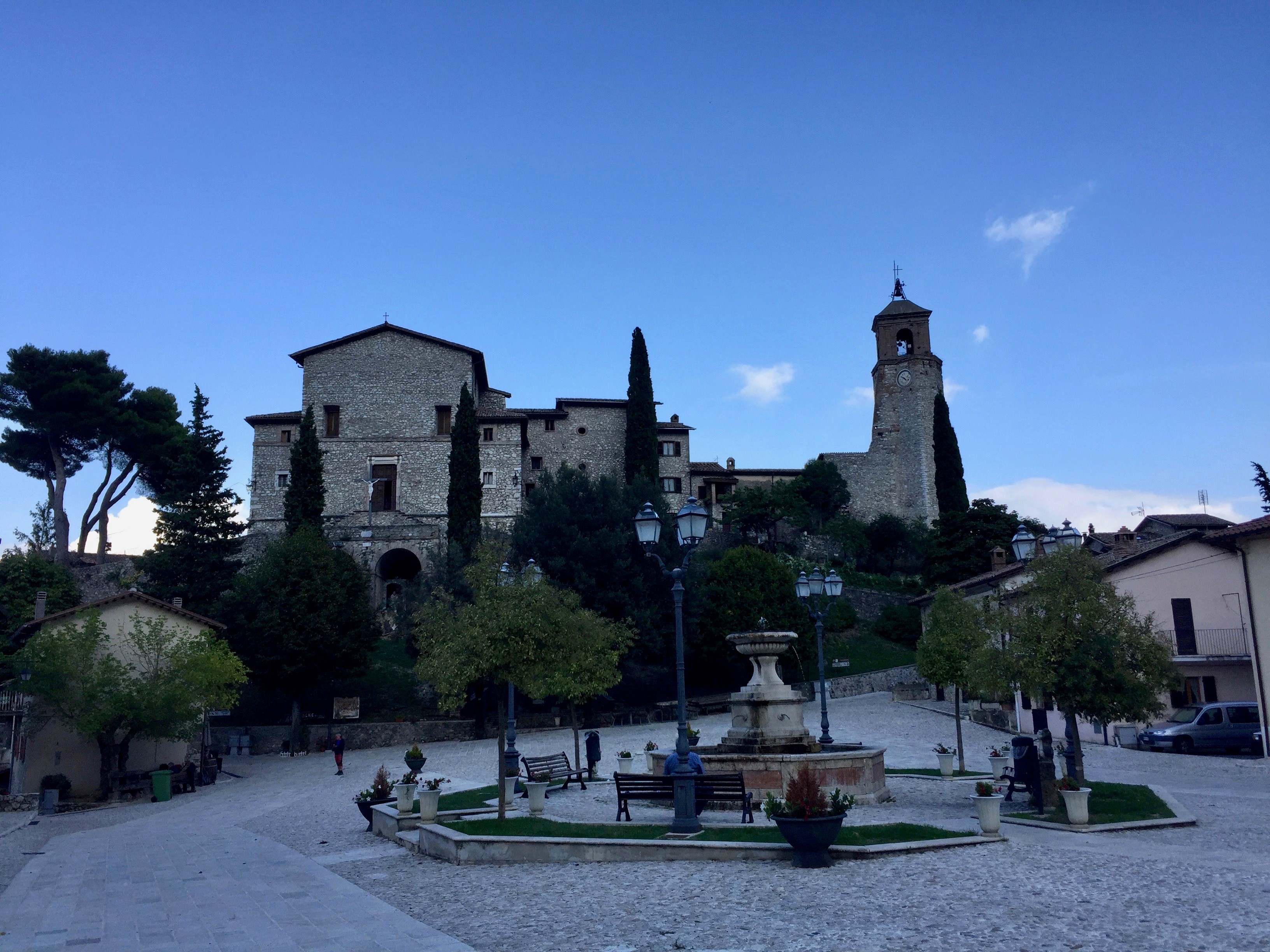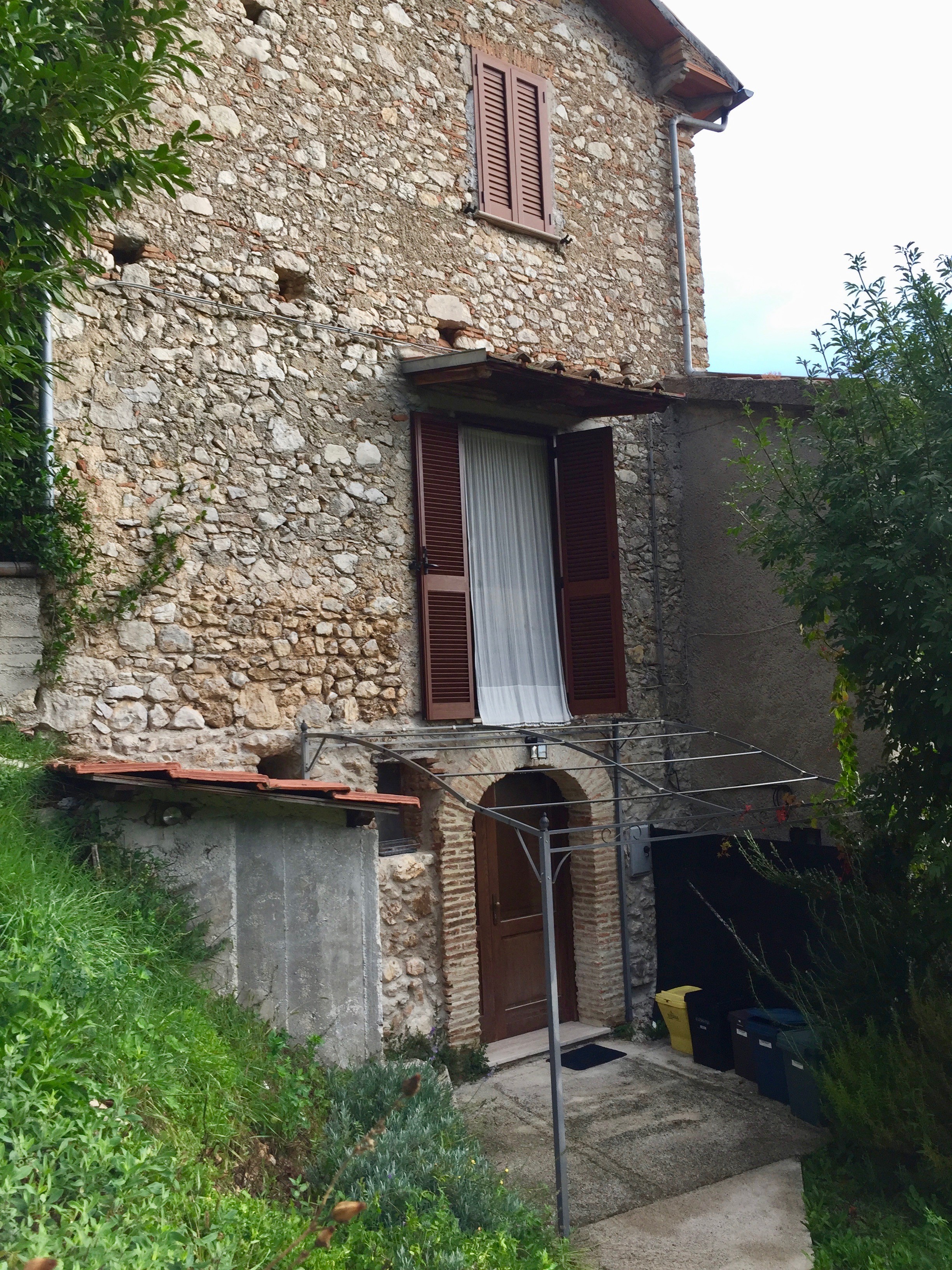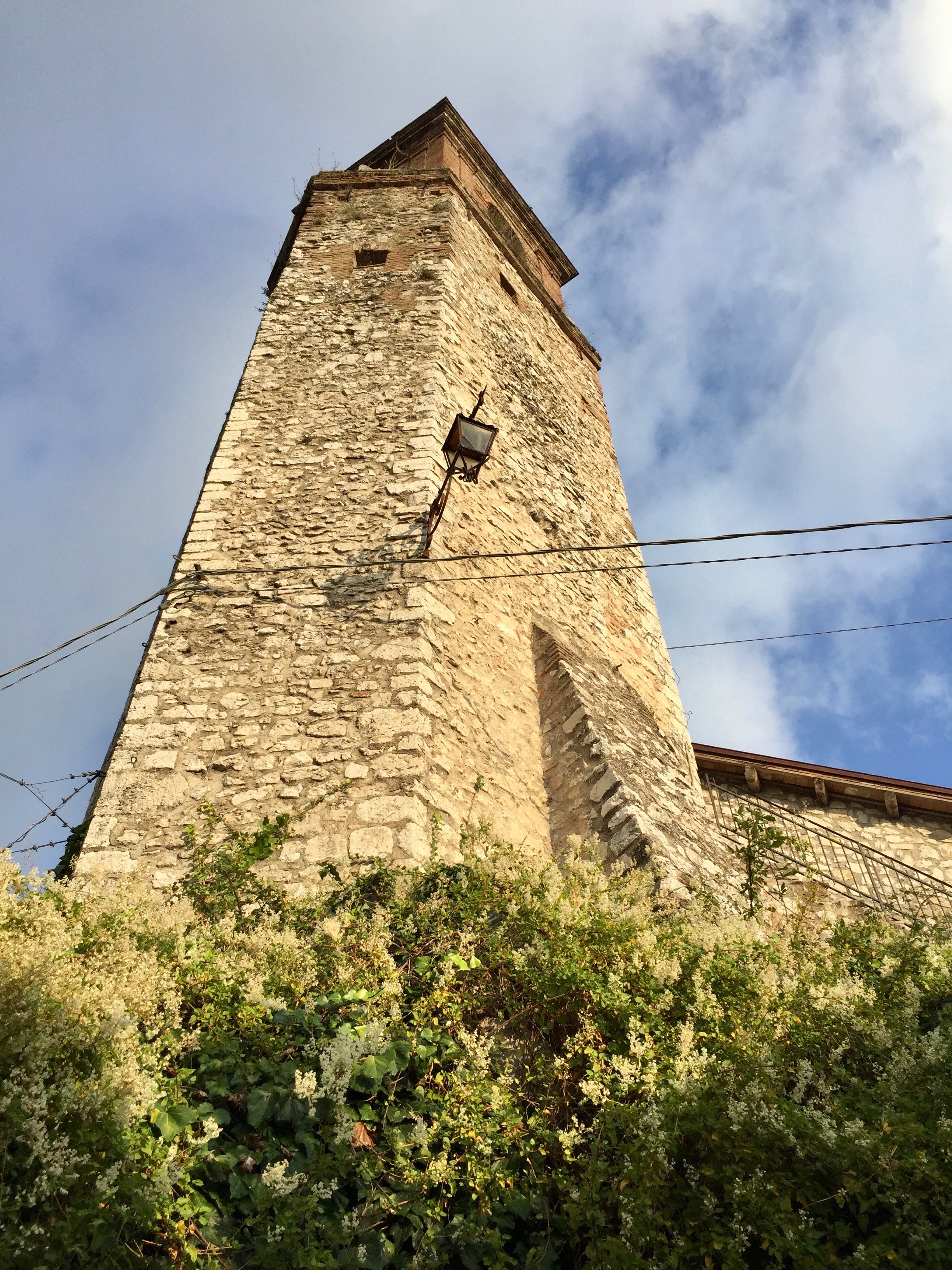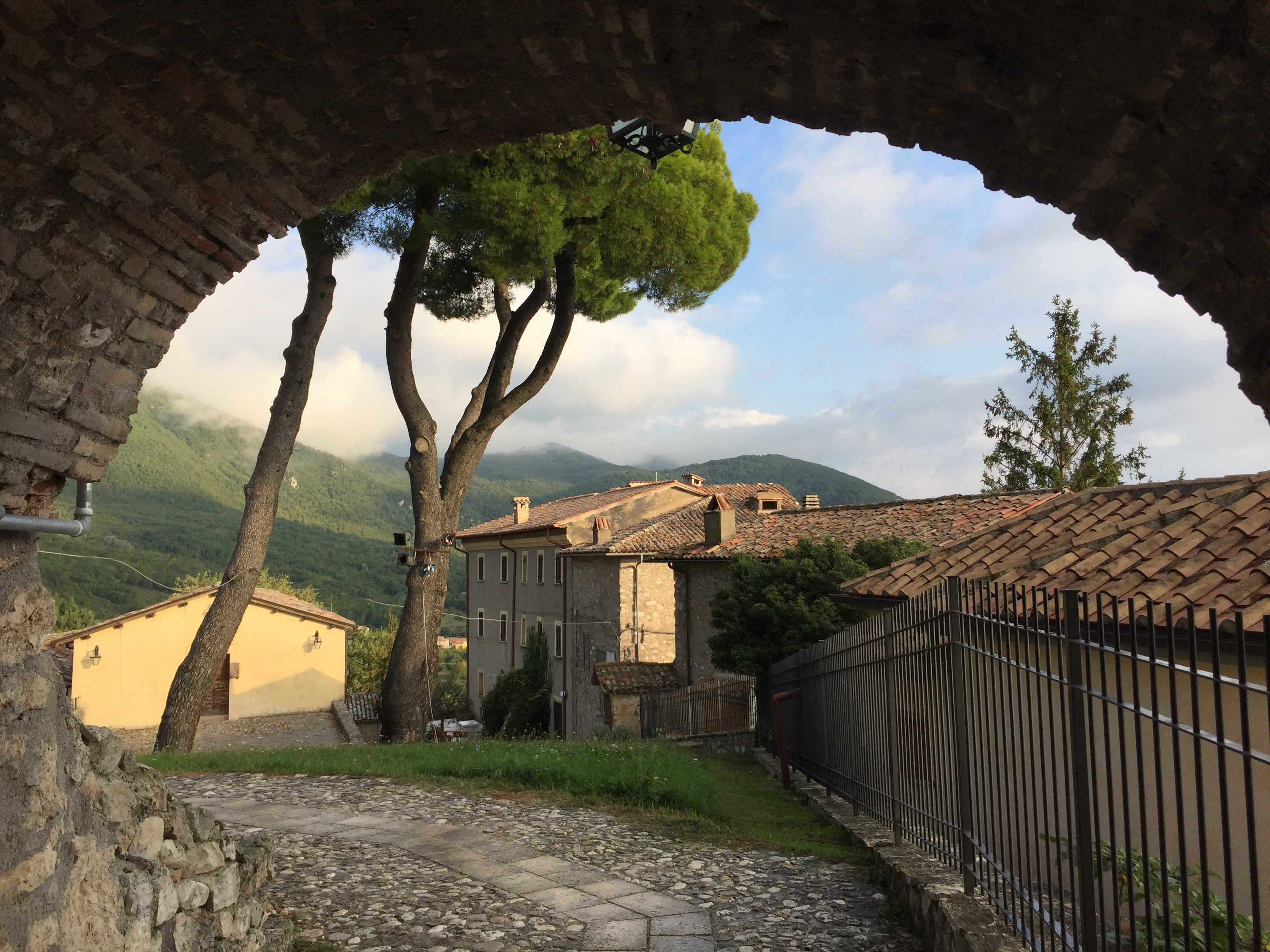(12)
Pilgrimage and the mind of gratitude
When I am on a pilgrimage, gratitude is my constant companion. Gratitude is not attached to anything specific, it develops organically by connecting with nature, people, and myself. It is a state of mind I am living in. I think that gratitude and equanimity are the parents of joy.
Leaving Romita meant leaving the wildness and beauty of nature, the deep green mosses and abundant blooming flowers, the stillness, and the authenticity of the people living there. It was hard.
Ancient moss-patched walls near the Romita
The path took me to old towns with ancient walls and lots of history.
San Gemini
When I arrived in Collescipoli in the evening, I was not interested in the old town anymore. I was dead tired. Walking for hours through industrial areas and on asphalt streets robbed all my energy. I ate Pizza in the only restaurant I could find in town – the town seemed dead.
City gate of Collescipoli
On of the empty streets of Collecipoli
The next day brought a different challenge. The walk went up and down hills, crossing creeks, going through silent woods and fields. However, there were hardly any signs and often I had to guess the way.
Huge oak tree on the way
I also made a detour up to the hermitage Speco di Narni, a gorgeous place high up in the mountains.
Cloister of Speco di Narni with a magnificent view down into the valley
When I arrived in Stroncone, I looked up how many steps I did today – it was more than 45,000. No wonder my feet were hurting. Stroncone is, like many other towns in Umbria, a very old town with narrow streets, many stairs, and arched walkways. I stayed in a 16th-century house, now a hotel. In the breakfast room, two doors led to former prisons.
Entrance gate to Stroncone
The way from Stroncone to the Sanctuary of Creccio was a pleasant walk up to a nearly 1000-meter-high pass and down into the Rieti area. The high plateau is solitary and open.
Sweet chestnut tree
A woman calling her cow, Stella
Twice a week, she drives from Stroncone to the community meadow to feed her cow.
I had reserved a place in Creccio for the night. The monastery and town of Creccio became famous because it was here that St. Francis invented the Christmas celebration as we know it. He wanted the population to see how Christ was born in poverty and ordered a monk to prepare a crib placed between a living ox and donkey.
Approaching the monastery of Creccio
Cell of St. Francis
When I arrived in Creccio, I found out that my accommodation was in an empty house one kilometer outside of the village. The room I was assigned to was located in the basement with no window. I agreed to stay there, as it was clean and inexpensive.
The piazza in the village of Creccio
It was early morning when I got up. I put the typical Italian moka pot on the gas flame and decided to check the weather. Before I stepped out, I slipped into my underwear and T-shirt and opened the door. The moment I was outside, the door locked behind me! I had no way to get in again! What should I do? I had no phone to call and there was nobody around!
Locked door into a windowless room
Tower in Creccio
I had no choice but to walk in the rain on a public road to the village of Creccio and get the owner out of his bed. Luckily, I knew where he lived. It was an incredible experience! On the one hand, I felt more than ever before the connection to the ground – felt the stone pebbles under my feet, and the rain and the fresh air on my skin. On the other hand, two emotions filled my body and mind – the one was anger that the owner installed such a door without warning me about it. However, the most dominant state of mind was gratitude – I was immensely grateful that I did not have to walk totally naked on this public road! Every step was connected with “thank you, thank you, thank you!”
Morning view of Creccio
Gratitude for me is the key to opening the heart. Whatever life brings, I always have the opportunity to be grateful. During pilgrimages, gratitude happens naturally. It is not so easy to keep this state of mind in everyday life, especially during quarantine. Therefore, I have to practice!
I started practicing gratitude years ago. When I light a candle before morning zazen, for example, I connect lightning the candle with gratitude for life. Now I expand this practice to my everyday life. I am grateful as often as I remember – for food, for water, for the sunlight – the list is endless.
Last November, I visited a mindfulness forum in the monastery of Melk in Austria. It featured Brother Steindl-Rast, a Benedictine monk who studied Zen Buddhism with several masters, including Shunryo Suzuki Roshi. Life is a gift, he says, and the only response to this gift is gratitude.
“It’s not just another day
it’s the one day that is given to you today.
It’s a gift.
Look at the sky
Open your eyes
Let the gratitude overflow.
Then it will really be a good day.”
Brother Steindl-Rast

